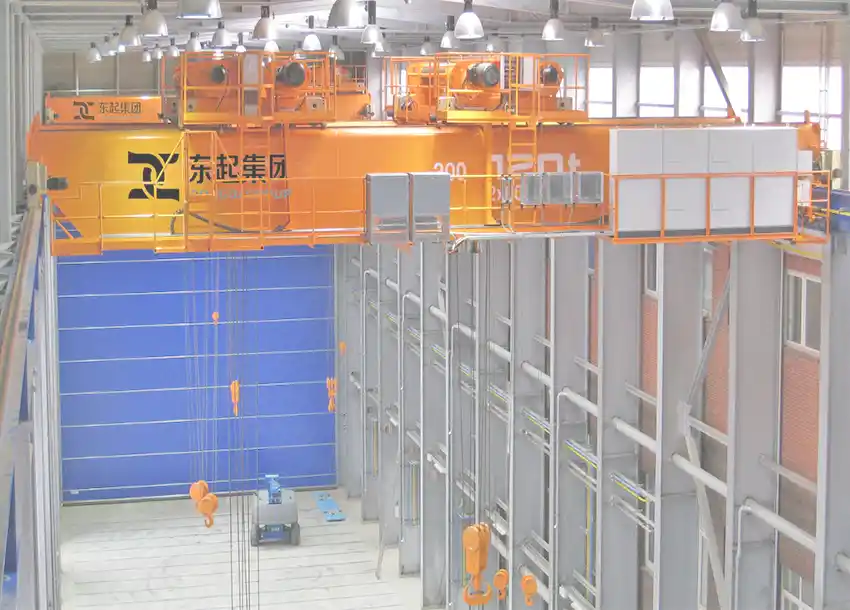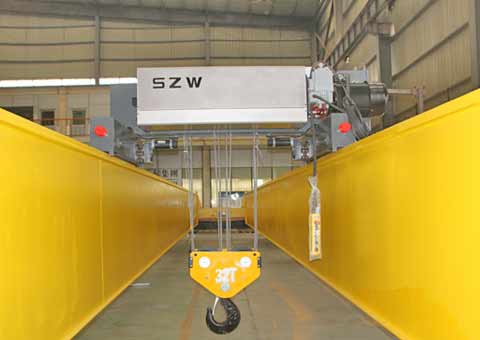How Do Overhead Crane and Hoist Improve Safety in Your Workshop?
Overhead cranes and hoists safety is first. How does overhead crane and hoist improve your safety? How to use overhead crane safely? Check now.
Every business has employee safety as a key responsibility, especially in light of the present labour scarcity. Maintaining employee safety on the job in manufacturing, warehouse, and distribution activities has become more crucial than ever.
Nonetheless, many of the tasks carried out at these facilities require human lifting, pushing, or pulling of weights. In fact, overexertion connected to manually handling loads is the main cause of significant, incapacitating workplace accidents, such that result in employees missing five or more days of work, according to Liberty Mutual Insurance's 2022 Workplace Safety Index. According to the report, these accidents cost companies $12.63 billion annually in workers compensation, medical costs, and missed wages.
Types of Overhead Cranes and Hoists
There are many overhead handling technologies available to substitute physical labour and floor-based vehicles for lifting, lowering, carrying, and positioning items in order to decrease the chances of such injuries—and the expenses associated with them. The main types of overhead cranes consist of:
Overhead bridge cranes - types of overhead cranes available for your applications
Overhead bridge cranes
Overhead cranes are used for handling large, bulky, and heavy objects across an establishment's overhead space by lifting, lowering and moving. The overhead bridge cranes can convey a weight in three directions—side to side, back to front—in a rectangular area because they are designed with great lifting capacity. An operator can manually operate their function, use a cable pendant, or use a wireless controller. Electric overhead cranes assist with loading and unloading tasks, warehousing storage, and manufacturing operations (such as staging and assembly for work-in-process). At yards, maritime ports, and railroad depots, outside cranes manage loading and unloading.
Monorails
Monorails position the cargoes after moving them around a facility or process in big, bulky loads. By transporting items overhead — horizontally, vertically, and laterally — on carriers (trolleys) suspended from an uninterrupted run of permanent, overhead track covering nearly any distance, monorails optimise a building's vertical area. Monorails are most frequently used in manufacturing applications and can be operated manually, by an operator utilising a wired pendant station, or wireless controls.
Workstation cranes
Workstation cranes aid employees in handling, moving, and lifting big goods so they can work on them. Workstation cranes, designed for certain work spaces, use a vertical lifting mechanism that suspends the weight for manipulation, transportation, and placement.
Overhead crane hoists - Types of overhead crane hoists for sale
Hoists
Hoists are a vital element that enable the vertical raising and lowering of cargo and loads, together with overhead cranes, monorails, and workstation cranes. Hoists can attach to individual monorail carriers, hang from the end of a cantilevered bridge or from a runway in a workstation crane application, or connect to cranes via a trolley that spans the entire length of the crane bridge.
How Overhead Crane and Hoist Enhance Employee Safety
In a manufacturing, warehousing, or distribution operation, adopting a mix of these overhead material handling crane and hoists solutions protects workers in a number of ways.
The ergonomic strains and efforts involved in manually lifting, pushing, or pulling heavy loads are eliminated since overhead lifting technologies perform the heavy lifting. There are solutions for loads weighing 50 lbs. to 100 tonnes or more that prevent physical harm.
Second, the use of floor-based load transportation technologies is decreased by overhead lifting systems. These solutions greatly lessen employee exposure to potential hazards brought on by such vehicles transporting goods through constrained spaces because they are limited to a specified zone inside an operation and are only employed in an overhead space.
Finally, overhead lifting solutions travel at controlled rates along known travel pathways. Overhead crane and hoist lifting systems travel in a known course at a consistent speed to increase productivity and decrease the chance of crashes. For added safety, integrated safety features including flashing lights and audible alarms notify employees when the overhead system is in use.
Fourth, numerous tools improve and guarantee the secure operation of overhead lifting technologies. These include limit switches, digital lasers, and encoders that limit crane travel to specific facility zones and collision avoidance systems, as well as smart crane technologies that intuitively anticipate a problem, such as excessive load sway, collisions, off-center lifts, or snags. Sway control technologies also anticipate and counteract the natural pendulum effect that occurs when starting or stopping load motion.
Overhead Crane and Hoist Resources for Safer Operations
The engineering and technical standards specifications for the safe design, engineering, manufacturing, operation, and service of overhead lifting equipment are produced by the Crane Manufacturers Association of America (CMAA), the Hoist Manufacturers Institute (HMI), and the Monorail Manufacturers Association (MMA). A wide variety of crane, hoist, monorail, and workstation crane types are covered by the standards. These were created in accordance with the American National Standards Institute's (ANSI) criteria, and they are acknowledged globally as the premier source for the secure development and application of overhead lifting systems.
A complete collection of publications for choosing the best overhead lifting equipment for a particular application is also published by CMAA, HMI, and MMA. The evaluation and selection of the appropriate solution for the load's characteristics, the operating environment, facility constraints, frequency of use, service duty, desired handling speed, and other factors is made easier with the aid of these product and buyer's guides.
The three associations also provide instructions and check lists for the equipment's appropriate, regular maintenance and safety checks. They include free pre-inspection checklists with information on each location to check that operators can use at the beginning of each shift. There are additional rules for performing more thorough inspections on a regular or periodic basis to make sure the machinery is still in good, secure functioning order. To ensure the safest operation, the recommendations contain instructions on how to manage any problems found during these assessments.
Consider using overhead crane and hoist equipment to move, raise, position, and lower loads inside a facility in an ergonomic and predictable manner while thinking about how to protect workers. The members of CMAA, HMI, and MMA are available to provide further advice and feedback on how these technologies improve an operation's safety and productivity.




